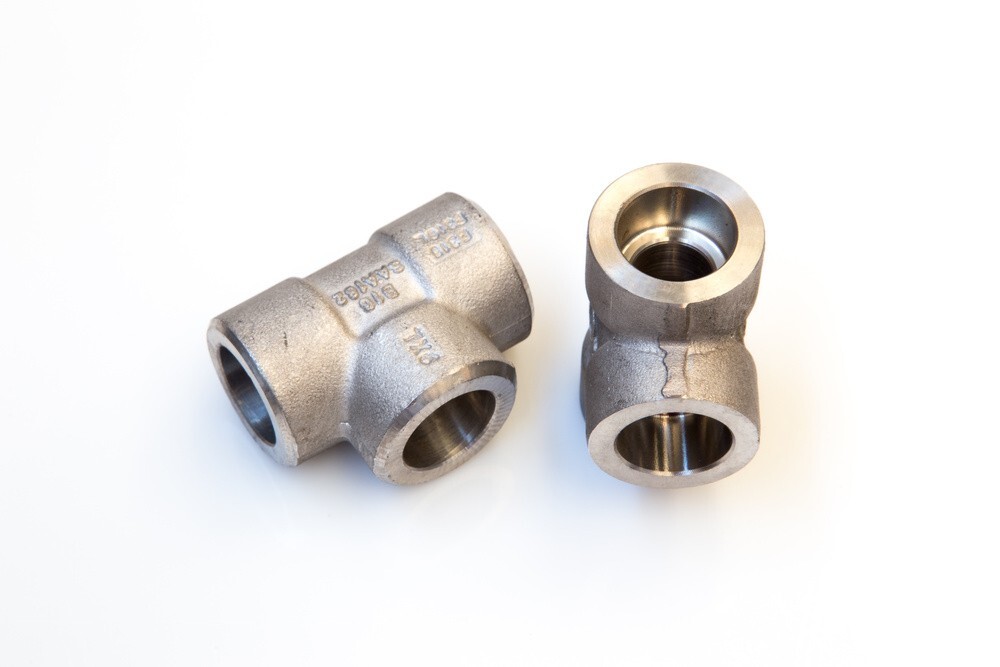What is Tee Pipe Fitting?

Tee pipe fitting is a type of plumbing component that connects three pipes together. It's the most popular type of fitting on the market due to its versatility, and is one of the easiest types of joints to make. Tee fittings, also known as T's. The tee fitting has three sides that all have holes in them - one side for water, and two for air (or gas). With a tee joint you can either use a branch connector or parallel connectors which will be discussed later in this blog post.
The Correct Way To install a Tee Fitting
There are many different ways to install a tee fitting, however there is one way that it should always be installed. This will ensure the best possible fit and seal on your pipe system. The correct installation method for installing a Tee Fitting:
A) Ensure that when you place the component into its desired location that all of the joints remain fully sealed.
B) Make a mark on the component where it meets its counterpart, this is your reference point to ensure that the fitting remains straight and true.
C) Using a wrench or a pair of pliers tighten down both parts equally until they are nice and snug against each other. You don't want them too tight as you can damage the threads, but you also don't want them too loose as this can cause a leak.
D) Using Teflon tape or some other pipe sealant such as Pipe Dope to ensure that there are no leaks between your components and joints. Follow these steps when installing any type of Tee Fitting for optimal results!
Different Types of Tee Pipe Fitting
There are many types of Tee fittings, each having a different purpose. The most common and important type is the "Tee" which has three outlets; two lateral (side-by-side) and one central outlet. Here are some different types of tees:
1. Tee-And-Wye:
A tee-and-wye is a fitting that has both three separate outlets and one central opening. The lateral openings are commonly used for distributing water flow evenly, while the center opening can be used to connect hoses or pipes together so as to allow passage of fluid through them in either direction.
2. Elbow Tee:
An elbow tee fitting is a type of Tee variant that has an extra 90° bend in the middle. This makes it possible to connect two separate hoses or pipes together while maintaining their original orientation and direction, so as to avoid having them cross over one another at any given point.
3. Street Tee:
A "Street Tee" has a single outlet, and is used to divide water flow from one line into two different lines without splitting it evenly between the two paths. The central outlets are usually placed lower than the lateral ones so as to allow for maximum usage of available space on top of or below ground level since this tee is usually used for outdoor applications. A Tee can also be placed in the middle of a pipe or hose to divide it into two separate paths, each with its own opening and closing valve so as to allow water flow through only one path at any given time.
4. Reducing Tee:
A "Reducing Tee" takes the normal tee design one step further by allowing the primary outlets to be connected together in a parallel fashion, so as to divide water flow between the two paths. This type of tee is usually used when both lateral openings need equal distribution and sharing of water pressure.
5. Cross Tee:
A "Cross Tee" has four separate exit points; two on each side that are at 90° angles from one another. It can be used to divide water flow into four separate paths, or alternatively it may be joined together with additional fittings such as a Tee fitting. This type of tee is usually placed in the middle of a pipe so as to give equal distribution and sharing of water pressure between all lateral openings.
6. Reducing Cross Tee:
A "Reducing Cross Tee" works the same way as a normal cross tee, but it has an additional reducing component that allows the primary outlets to be connected together in such a manner that whatever amount of water flow passes through one side will also pass through the other. This type of Tee is usually used for outdoor applications where space and weight are major concerns since this variant saves up on both.
7. Split Tee:
A "Split Tee" is commonly used when two or more entry points are needed to be divided between a single exit point. This type of Tee requires either three different types of fittings in order to work properly, or alternatively one can make use of an additional reducing cross tee which routes water flow through the center opening and then divides it into two separate paths.
8. Lateral Tee:
A "Lateral Tee" is a type of tee that has only one central outlet and no lateral or side-by-side outlets. Most often than not, this variant is used to divide water flow into three different paths; the central opening leading up to an individual hose or pipe while each of the other openings lead to another hose or pipe.
9. Tee with Lock Nut:
A "Tee with Lock Nut" is a type of Tee fitting that has no central outlet, and only two side-by-side lateral outlets instead. This variant can be used as an alternative for the normal tee in plumbing systems where it becomes necessary to prevent any fluid leakage from occurring between connected hoses or pipes. The most common way to do this is by screwing a locking nut over the central opening and tightening it on until it reaches the point where leakage becomes impossible without the application of force.
Some Most Frequently Asked Questions About Tee Pipe Fittings
1. What Are The Tee Fitting Connectors Used For?
This component can be used in plumbing systems to divide or route water flow through multiple paths. There are several alternative usages for the Tee fitting in plumbing systems. For example, a "Tee" can be used to separate hot water from cold; when one or both of the lateral outlets are connected to another pipe or hose that will take away some amount of flow and redirect it elsewhere. A tee is also placed at an intersection between two pipes so as to connect them both together.
A tee fitting is a connector that can be used in the middle of two pipes to allow them to join together. It allows for fluid, gas or power flow. The term "tee" comes from its shape - it looks like an upper case letter 'T'. A T-fitting will have three openings; one on each side and one in the middle.
2. How Much Length Does a Pipe Tee Add?
A pipe tee fitting is a piece of piping which has two openings, each leading into separate pipelines. The length added by the tee depends on its type and size. For example, Type K (or Kerbside) Tees are usually used at corners in drainage systems where two 90-degree turns need to be made for the pipes to proceed in the right direction. These Tees add 0.75 to one inch of length (depending on pipe size).
Generally, Type L and M tees added about 0.25 inches for every two feet of pipeline leading into the tee fitting. For example, a four-foot long piece that has two openings will add around half an inch to the overall length of the pipe.
3. What Are The Advantages Of Using T- Pipe Fittings?
Tee pipe fittings, also known as T-pipe fittings are connectors that help join two pieces of pipes or tubes to each other. The advantage of using T-pipe fitting is that it saves time during assembling pipelines because there will be no need to change direction at every small distance for example while joining two pipes where the first pipe is vertical and second horizontal. It also saves time during installation because it allows to install pipes in a single continuous movement without any need for rotating or aligning of equipment.
